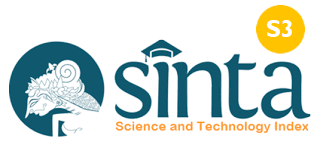Kajian Pendidikan Karakter Dalam Cerita Sundara Kanda
DOI:
https://doi.org/10.37329/cetta.v3i2.447Keywords:
Character Education, Sundara Kanda StoryAbstract
Hindu teachings contain a lot about character education, morals, ethics and manners. Moral education can be seen in the story of Sundara Kanda, which is a sub of Itihasa in the Ramayana epic that tells the journey of life with various obstacles and tests that must be faced with full fortitude, strength and determination. Every event that occurs in the Sundara Kanda story is a unified narrative unit in resolving the conflict of every event. The setting in this story uses the setting of Mount Mainaka, Alengka Palace, Taman Angsoka, Kiskinda kingdom. The character is Hanuman who becomes a central figure, then there are goddesses Sitā and Ravana. The accompanying figures are Trijata, Wibisana, Anggada, Jembawan, Sugriwa, Laksmana and Rama. Rahwana as the Antagonist, then there are also giants. His mandate is loyalty and determination in carrying out dharma. Character characters contained in the Sundara Kanda story include characterization displayed through the use of the character's name, through the appearance of the character, and characterization through the author's speech. In accordance with the characters contained in Hindu teachings, namely in the book of Bhagawadgita, the characters in the Sundara Kanda story can be grouped into two characters namely daivi sampad and asuri sampad. The values contained in the character of the Sundara Kanda story include religious, honesty, responsibility, tolerance, discipline, and hard work. As a whole, the character's character value is a national character that should be inculcated and developed to the wider community, in order to shape the attitudes and behavior of a person in carrying out the duties and obligations that should be carried out both towards oneself, the family environment, society, nation and state.
References
Darmadi, S. (2013). Corporate governance disclosure in the annual report: An exploratory study on Indonesian Islamic banks. Humanomics. https://doi.org/10.1108/08288661311299295
Emzir. (2017). Metodologi penelitian pendidikan kuantitatif & kualitatif. In Metodologi penelitian pendidikan kuantitatif & kualitatif.
Jallaluddin, H. (2007). Filsafat Pendidikan Manusia, Filsafat, dan Pendidikan. Jogjakarta: Aruzz. Media Grup
Jelantik, I. B. (2011). Sundara Kanda. Jakarta: PT Grasindo.
Kishler, T. C. (1965). The Ramayana. Thought. https://doi.org/10.5840/thought196540139
Minderop, A. (2005). Karakteristik Telaah Fiksi. Jakarta: Yayasan Obor Indonesia.
Moleong, L. J. (2014). Metodologi Penelitian Kualitatif Edisi Revisi. Bandung: PT. Remaja Rosdakarya Offset.
Mustari, M. (2014). Nilai Karakter Refleksi Untuk Pendidikan. Jakarta: PT Raja Grafindo Persada.
Penerjemah, T. (1987). Kekawin Ramayana I. Bali: Dinas Pendidikan Dasar Provinsi Bali Dati I.
S. Srinivasan, S. S. (2012). Value Education Concepts as reflected in Sri Sundara Kanda of Srimad Valmiki Ramayana. International Journal of Scientific Research. https://doi.org/10.15373/22778179/may2013/29
SCHELER, M. (1944). Formalism in Ethics and Non-Formal Ethics of Values: A New Attempt toward The Foundation of an Ethical Personalism. In Journal of the History of Ideas. https://doi.org/10.2307/2707101
Sutriyanti, N. K. (2016). PENINGKATAN MUTU PENDIDIKAN KARAKTER MELALUI PERAN ORANG TUA DALAM KELUARGA. Jurnal Penjaminan Mutu. https://doi.org/10.25078/jpm.v2i1.57
Tanu, I. K. (2010). Konsep dan Makna Pembelajaran di Era Biobal. Denpasar: Sari Khyangan Indonesia.
Teeuw. (1991). Sastra dan Ilmu Sastra Pengantar Teori Sastra. Jakarta: PT. Girimukti Pasaka.
Titib, I. M. (2003). Menumbuhkembangkan Pendidikan Budhi Pekerti Pada Anak (Perspektif Agama Hindu). Bandung: Ganeca Exact.
Downloads
Published
How to Cite
Issue
Section
License
An author who publishes in the Cetta : Jurnal Ilmu Pendidikan agrees to the following terms:
- Author retains the copyright and grants the journal the right of first publication of the work simultaneously licensed under the Creative Commons Attribution-ShareAlike 4.0 License that allows others to share the work with an acknowledgement of the work's authorship and initial publication in this journal
- Author is able to enter into separate, additional contractual arrangements for the non-exclusive distribution of the journal's published version of the work (e.g., post it to an institutional repository or publish it in a book) with the acknowledgement of its initial publication in this journal.
- Author is permitted and encouraged to post his/her work online (e.g., in institutional repositories or on their website) prior to and during the submission process, as it can lead to productive exchanges, as well as earlier and greater citation of the published work (See The Effect of Open Access).
Read more about the Creative Commons Attribution-ShareAlike 4.0 Licence here: https://creativecommons.org/licenses/by-sa/4.0/.





